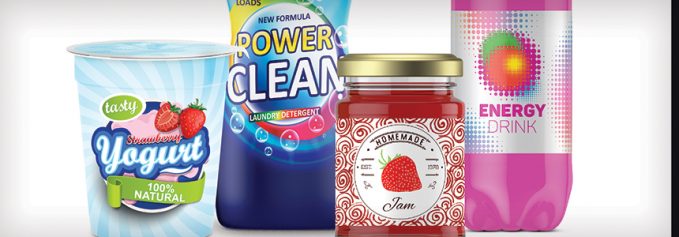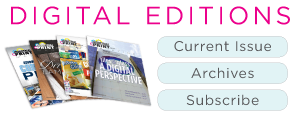
By Cassandra Balentine
Packaging is one product that cannot be replaced with electronic alternatives. Consumer purchases are often driven by the look and feel of a product’s label and packaging. Therefore, brand owners must carefully consider how products are presented.
While there is competition from emerging markets like direct-to-object printing, pressure-sensitive labeling remains strong. According to recent research from Alexander Watson Associates (AWA), AWA Global Labeling & Product Decoration Market Update 2019, pressure-sensitive labeling continues to represent a 40 percent share of the global labeling technologies market, followed by glue applied technology at 35 percent market share, and sleeve labeling at 19 percent and growing. The research firm also indicates that in 2018, worldwide demand for all label types approximated to 64,245 million square meters, a growth of 4.4 percent over 2017 volumes.
The adoption of digital print technologies is changing the overall packaging industry. As demand for shorter, more personalized labels continue, the market adapts with new and updated offerings. A variety of ink and facestock options for digitally printed labels are available, including polypropylene, polyethylene, and PET. Many factors are considered when choosing the best option for the job. These include the product itself as well as where it will be stored.
Above: Acucote asks its converters specific questions to determine the best pressure-sensitive solution for the application.
Important Considerations
For any type of printing, considering the application is essential to selecting the right elements to produce the job. For label printing, this is particularly important as they are often adhered to a variety of different objects, subject to human and machine handling as well as extreme environments. While some manufacturers and brand owners are well versed in selecting label media, others benefit from expertise offered by media providers.
Cory Keller, senior product manager, digital, Avery Dennison Label and Packaging Materials, says that it’s easy for manufacturers and brand owners to stick with a label solution that has worked over time. “That said, many brand owners are not aware of the range of pressure-sensitive labeling options that exist,” he shares. This includes a variety of paper and film facestock options as well as adhesive choices that can be optimized to meet the needs of the application.
Brand owners may not necessarily be aware of the pros and cons of certain products, according to Melissa Harton, marketing manager, Acucote Inc. This mainly includes the performance characteristics of label stocks and adhesives, which can be customized for applications. “As a manufacturer, our biggest challenge is access to end use requirements and environments. Sometimes our converters do not have access to this information.”
Richard Southward, global product manager, labels, Innovia Films, shares that in his experience, brand owner packaging teams are very knowledgeable on label media considerations. “They understand the full packaging and labeling requirements that their product requires and work hard to get the best solutions to enable it to compete in very challenging markets. Expert support throughout the supply chain is available to improve or offer new solutions.”
Harton believes that it isn’t so much about education or industry background, but about having an internal checklist that details all of the questions suppliers need to know in order to make a proper recommendation. “It would be a simple way for our customers to convey the information needed for us to select or create the pressure-sensitive solution for the specific application.”
Remaining well informed of changes and advancements in pressure-sensitive substrates and printing equipment is important. “Industry partnerships and good working relationships with your pressure-sensitive material supplier make the difference,” suggests Melissa David, product manager, FLEXcon.
Nate Gill, marketing manager, Mactac, believes manufacturers are experts in the product they produce, but their knowledge in the individual components that make up the product may vary for a myriad of reasons. “Fortunately, Mactac is a pressure-sensitive adhesive expert and therefore brand owners are encouraged to call upon us to utilize our knowledge for selecting the optimal label for their applications. The pressure-sensitive market continues to evolve with new label technologies. The more we know about the brand owner’s requirements, the more we can help.”
Keller says selecting the right label material isn’t always as easy or obvious as it may seem on the surface. Manufacturers/brand owners often focus on the product to be labeled—what substrate will be labeled and its shape. This is an important first step, but secondary considerations should not be overlooked. These include the type of printing method utilized, whether the labels will be manually applied or by machine, and if the label or package will be exposed to any harsh environmental conditions.
“Collectively these considerations can play a big role in finding the optimal facestock/adhesive line based on select portfolios to help simplify the label selection process for applications such as apparel labeling, drum labeling, and wine/spirits/craft beer to name a few,” explains Keller.
“At the core, brand owners should consider both the purpose and value the label has to their product as well as the way the consumer will perceive it. For example, a brand owner of a retail consumer product may stress the importance the label stock has on gaining the customer’s attention, whereas a business-to-business manufacturer emphasizes long-term durability and fail-proof adhesion,” recommends Gill.
Gill adds that once the list of label requirements is determined, the brand owner should consult the manufacturer to discuss the label construction options that both meet their needs and are compatible with the available print technologies. “Open communication also reduces missing critical requirements and saves time and money.”
Acucote asks its converters specific questions to determine the best pressure-sensitive solution. These include basics like paper or film, roll or sheetfed, layflat, desired appearance, application surface, application environmental considerations, the type of print system to be used, how the label is applied, the length of the label, and regulatory requirements.
When choosing a label stock for a product, Southward says the first consideration should be how that product will be used, what impact it needs to have on the shelf to stand out, and how the supply chain will work. “If the product is likely to be placed in aggressive environments, the brand owner needs to consider whether maintaining the brand’s image is important for the full life or usage of that product.” For example, if the label for a shampoo bottle or body wash, it needs to be able to withstand regular squeezing in warm, moist environments without the brand identity breaking up or peeling off. Another example is labels applied in premium wine bottles that are likely to be stored in chillers or placed in ice buckets, these should remain on the bottle and intact throughout its use.
David suggests collaborating with a pressure-sensitive material supplier to discuss the end user requirements include the correct product is recommended. “Some of the frequently overlooked application requirements are the shape of the label, shape of the container, wrap around container—if applicable, as well as application and exposure temperature. Once a recommendation has been made, it’s also important to test the substrate on the intended application surface and its application environment.”
Advancements
Markets continuously shift; the packaging and printing industries are no exception. Many of the advancements made in regard to label media favor digital production trends.
Adhesive technologies are ever evolving, says Gill. “Today’s no-ooze adhesives withstand the heat and pressure of digital printing and guillotine cleanly.” Aggressive adhesives that can be applied to demanding substrates like rough plastics, waxy corrugated boxes, and low-energy soft plastics are on the horizon, according to Gill.
Keller points out that with UV inkjet mainstreaming—driven by analog/digital hybrid trend—there is an opportunity to create more all-in-one products that work for flexographic and digital platforms. He says Avery Dennison continues to look at the development of next-generation topcoats that provide customers the flexibility to use on traditional/analog or UV inkjet digital platforms.
David adds that the ability to print the same pressure-sensitive substrate on multiple pieces of digital and conventional printing equipment is beneficial. This reduces the number of the SKUs converters need to have on hand. Therefore, the ability to work with a pressure-sensitive manufacturer that can build and manufacture a custom product construction to meet specific application challenges.
Harton sees substantial growth in the type of materials compatible with dye, pigment, and UV inkjet print systems—both with films and facestocks. Special performance adhesives are also growing in demand. She says we’ll continue to see more digital compatible facestocks to the market. Also, UV adhesive use on a larger scale seems inevitable, she adds.
The use of polypropylene films with dry toner technology is another trend. “Traditionally, polypropylene films would have melted to the fuser’s rollers. Printer OEMs have significantly reduced the amount of heat required to fuse the dry toner to the surface of the film allowing additional substrate options,” explains David.
She also sees an expansion of digital print technologies that allow for short runs and personalized label designs for small businesses.
Southward believes market trends are centered on cost savings, environmental sustainability, and brand experience at the consumer level.
Looking at Labels
Digital print technologies advance in the quality of output, efficiency, and capable volumes. It is important for manufacturers, brand owners, converters, and print providers to stay on top of the latest trends and track available substrates for digital label printing.
Sep2019, Industrial Print Magazine



